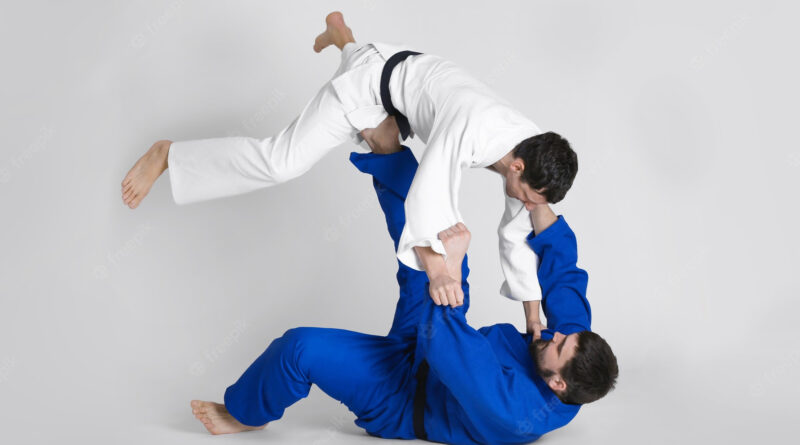The Most Popular Jujutsu Techniques and Their Uses
Jujutsu is an ancient Japanese martial art. It’s known as the ‘art of yielding’, as much of its focus is on using your opponent’s strength and momentum to your advantage, rather than directly opposing it. Such techniques are known as jujutsu techniques, which are subtly defensive rather than offensive.
As such, jujutsu practitioners primarily use their opponent’s strength to throw them off balance and immobilize them, usually ending with a final pin or locked hold that prevents them from regaining their balance and rising again. Jujutsu techniques – also known as jujube – provide a variety of ways to achieve this result. Many of these are subtle, such that it takes someone who knows jujutsu well to see how they were used. Here is an overview of some of the most popular jujutsu techniques and how you can use them in your training.
Ude-hane
The use-here is a technique where you use your opponent’s forward momentum and the grip of their arm against their own body to throw them over your shoulder. This is done by stepping back and turning your body so that the arm that is gripping you is pulled down towards your shoulder. This is timed so that your opponent’s momentum is driving them forwards, straight into your shoulder.
This technique is very effective when it comes to controlling a larger, stronger opponent, especially one who is likely to use their strength against you. The use-here is a great example of how a self-defense technique can be as much about taking advantage of your opponent’s moves as it is avoiding them.
Ude-guri
The use-guri is a classic example of how a seemingly minor detail can lead to a major difference in the effectiveness of a technique. This variation on the use-hane is performed with the same forward step that begins the ude-hand but ends with a quick twist of your arm instead of a shoulder throw. This twist brings your opponent’s arm across their own body, which prevents them from being able to use their strength to break the hold.
A strong use-Guri can easily end with a shoulder lock, which will prevent your opponent from rising for quite some time. This technique is often used in cases where an ude-hane against a larger opponent might be very difficult to perform. The use-guri can be just as effective against larger opponents; it just requires slightly different timing and application.
Kaki-use-garami
The kaki-use-garami is a classic example of how jujutsu techniques can be used to directly immobilize an opponent. The kaki-use-garami is primarily a wrist lock, with the added pressure of bending the elbow to press the wrist against it to increase pressure and make the hold more painful.
The kaki-use-garami is best applied while your opponent is trying to use a wrist lock against you, as in that situation their elbow is more likely to be close to your body. The kaki-use-garami is one of the jujutsu techniques used in the ancient art of jiu-jitsu to bring an opponent to the ground. Done properly, this jujutsu technique will cause significant pain and can lead to a knock-out if your opponent is not able to release the pressure.
Shiho-guruma
The Shiho-guruma is one of the jujutsu techniques used in martial arts competitions. The Shiho-guruma is a common technique used in judo and other grappling styles, especially in times when one fighter is on top of another and the opponent beneath is employing jujutsu techniques to fight the top-side fighter’s hands and arms off their vulnerable body. While the Shiho-guruma is often used in this way, it is also a popular method for taking an opponent down in jujitsu competition.
The Shiho-guruma is a shoulder throw, so it is particularly effective against an opponent who is standing and trying to use their weight to keep you down. The Shiho-guruma can be used from a standing position, or a kneeling position to instantly knock your opponent off their feet and back down to the ground.
Sumi-gaeshi
The Sumi-games is a classic example of how one technique can be used in several different ways. The Sumi-gaeshi is primarily a leg lift and throw, but it is also effective against someone who is kneeling and gripping your foot. While the primary use of the Sumi-gaeshi is to lift and throw an opponent, it can also be used to lift and trap, particularly against an opponent who has grabbed your lower leg.
The Sumi-games is a very versatile technique that can be used to topple an opponent or trap them against the ground. You can also use it for self-defense, for example, against an attacker who is trying to push you to the ground.
Tomoe-nagi
The tomoe-nagi is a technique that is often mistakenly called a leg throw, but it is more of a leg lock. This is particularly true when the technique is used to trap an opponent on their knees or with one knee on the ground. The tomoe-nagi is performed as your opponent is kneeling, with one knee on the ground and the other foot lifted and planted. You lift the foot that is planted, pulling your opponent off their knee and towards you.
This can be used to either trap an opponent who is kneeling or to topple an opponent who is trying to keep their knees off the ground. The tomoe-nagi is a great technique to have in your arsenal, as it can be used to keep an opponent off-balance even when they have both knees on the ground. You can also use it to trip someone who is standing, but with a slightly different technique, which is called the Yoko-tomoe-nagi.
Jujutsu techniques are some of the most popular in martial arts and self-defense and for good reason. These subtle, yet effective moves can be used by anyone – regardless of size or strength – to control or incapacitate an opponent. And while they can be used in a self-defense situation, they are also commonly used in competition, particularly in grappling sports like judo and Brazilian jiu-jitsu.




